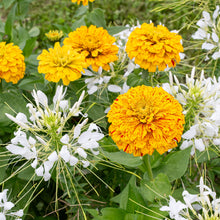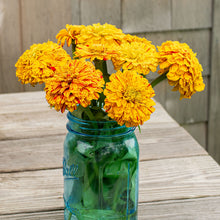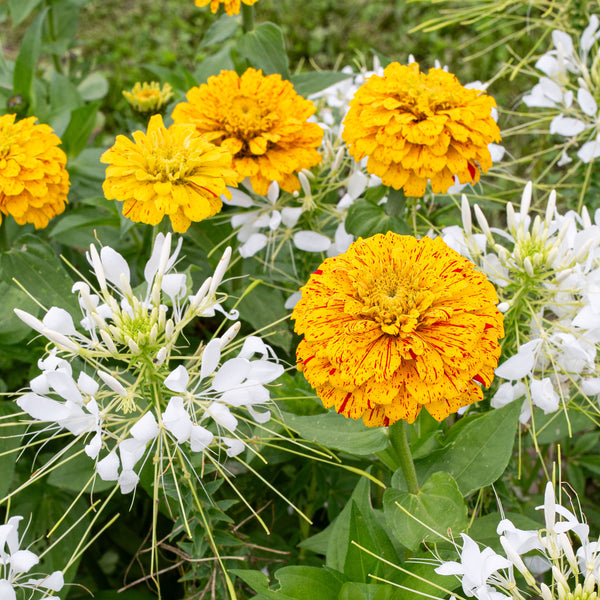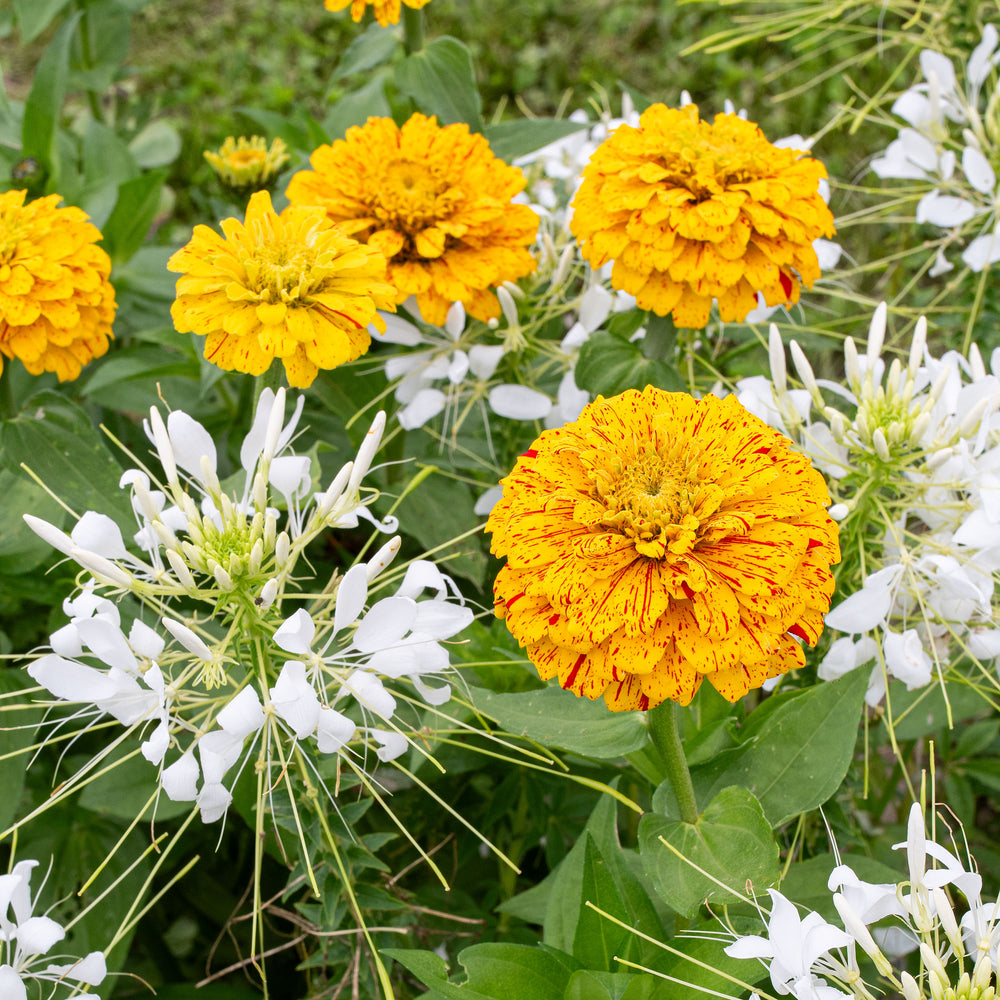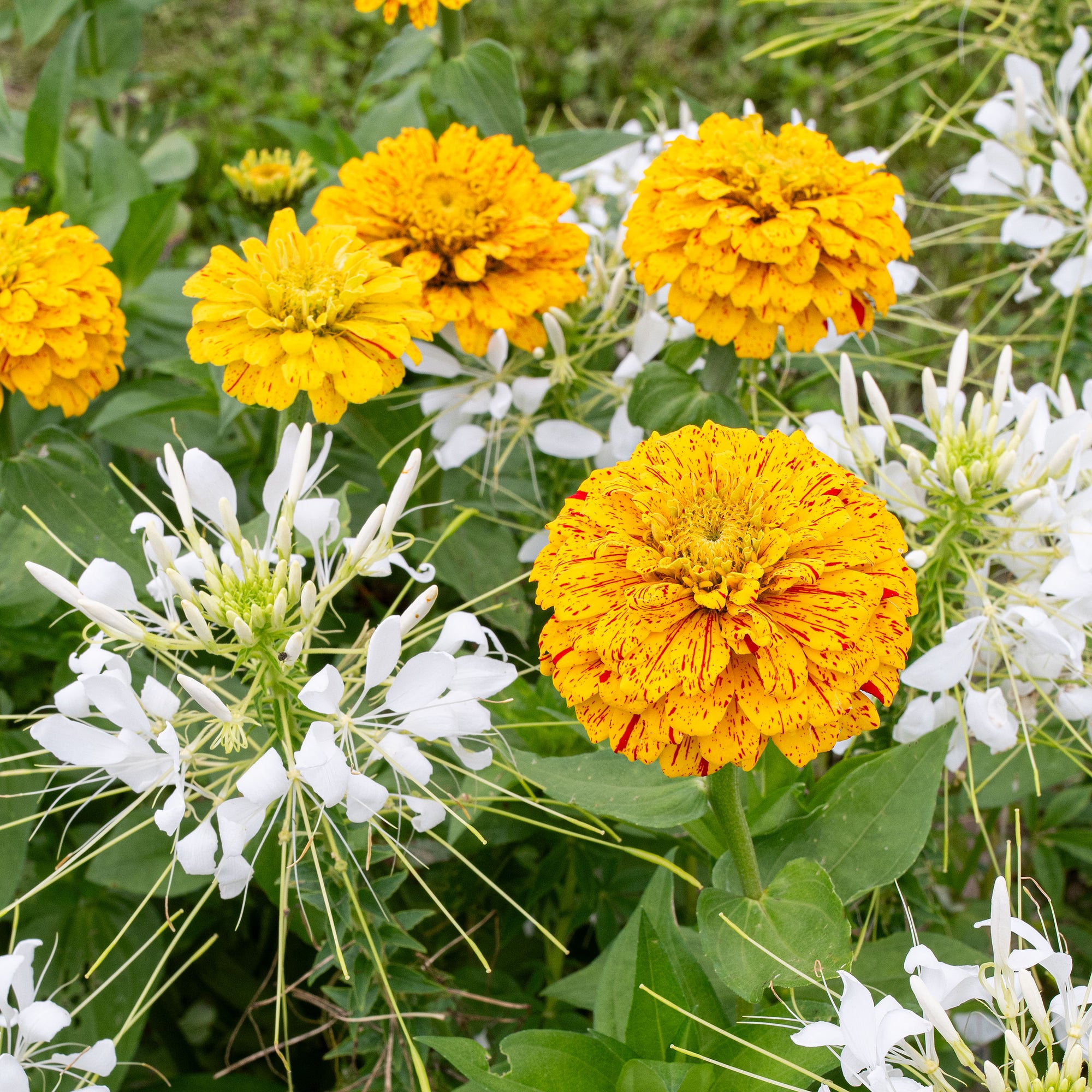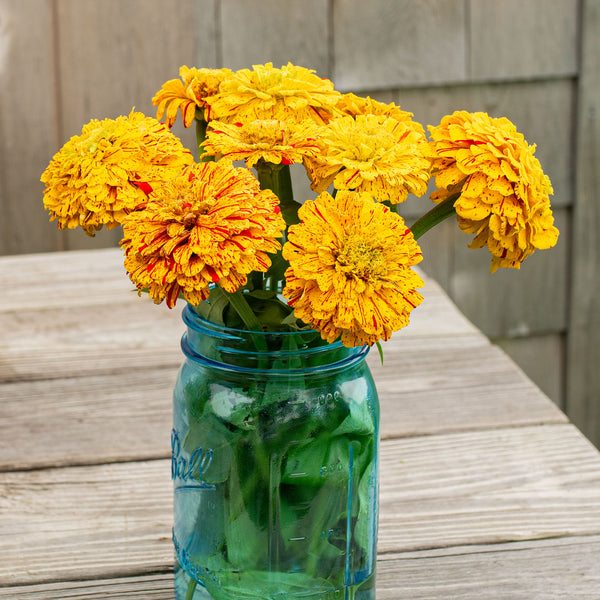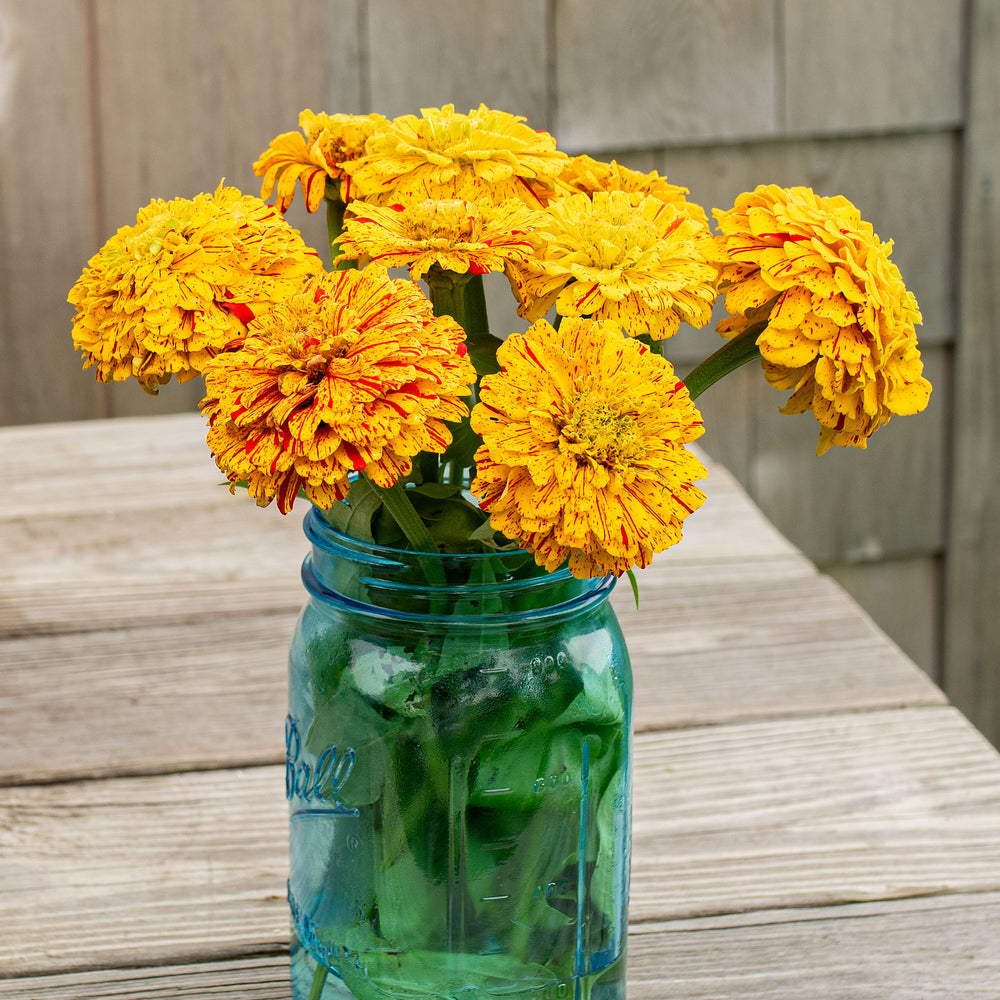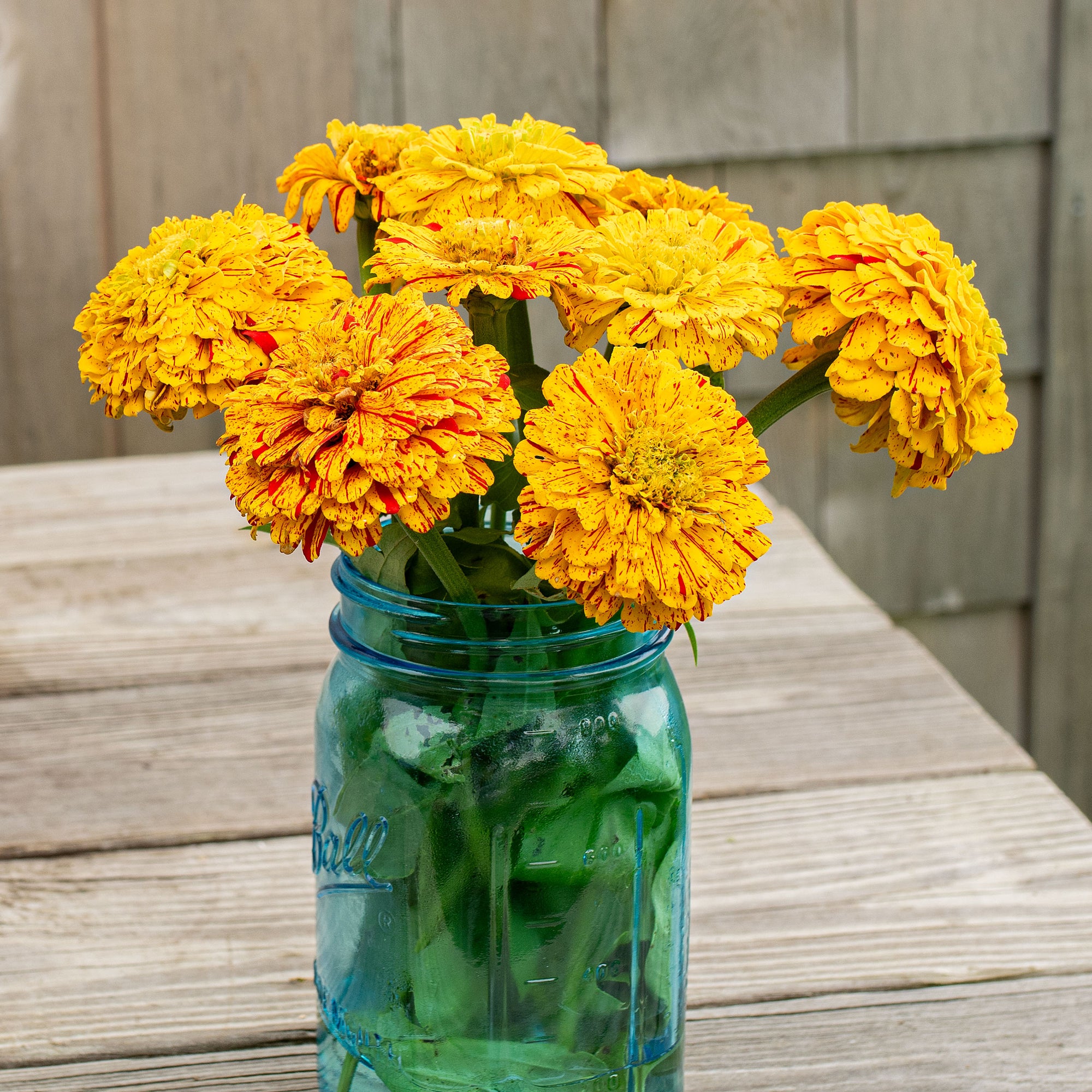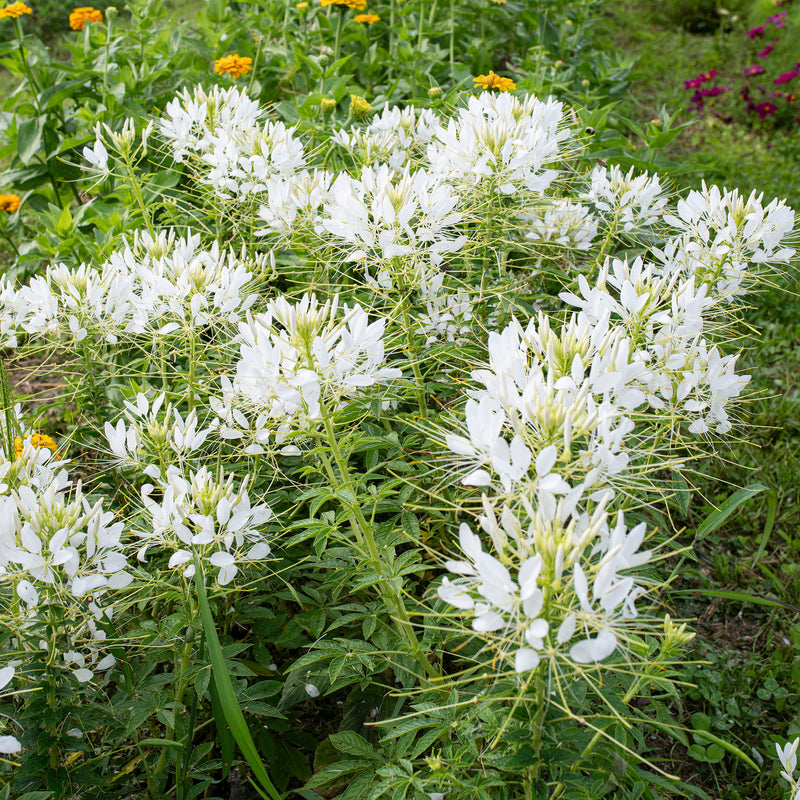SOWING INSTRUCTIONS
Seed To Bloom:
9-12 weeks
Starting Indoors:
Sow 6-8 weeks before last frost. Keep at 70-80°F.
Starting Outdoors:
Recommended. Direct sow after last spring frost.
WHEN TO SET OUTSIDE
After last spring frost, when night temperatures remain above 50°F.
PLACEMENT & CULTIVATION
Zinnias brighten up mixed borders, annual beds, and containers in full sun and compost-enriched, well-drained soil. They are easy to grow, sown directly in the garden or started indoors. Give them plenty of room to develop; one sowing method is to plant three seeds every 15-18" or more for large types, and thin out all but the most vigorous grower to ensure air circulation for healthy foliage and space to grow a strong, branching form. Pinch back when seedlings reach about 6-8" in height to encourage more branching and deadhead or cut for bouquets regularly for a midsummer to frost show.
Watering Details:
Tolerates drought, but performs best when watered regularly. Keep moist, watering only in the morning. Avoid wetting the leaves.
Fertilizer:
Mix in an organic, all-purpose granular fertilizer soon after planting out, and again when flowering begins.
Diseases & Pests:
Avoid fungal issues by spacing properly and placing in a location with good air circulation. If problems arise, treat with an organic fungicide or neem oil. If slugs are troublesome, treat the surrounding soil with pelletized iron phosphate. Diatomaceous earth or crushed eggshells can also be spread on the surrounding soil to prevent or resolve this issue.
When to Cut for Bouquets:
Freshly opened flowers. Make sure stems are firm and holding bloom upright.






























